
Our Trip To New England, August 2004

SALEM
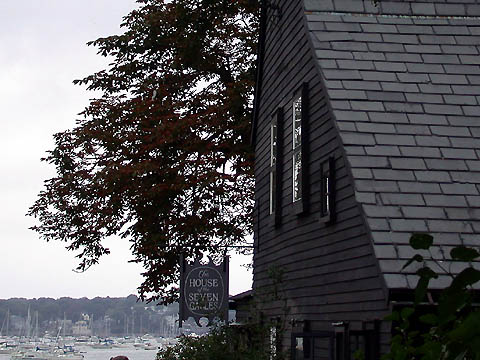
The House of the Seven Gables with Salem Harbor beyond. This year marks the 200th birthday of Nathaniel Hawthorne and all of Salem seems to be celebrating, as he was connected with all the things for which the city is famous -- seafaring trade, literature, witchcraft and the struggle with religious intolerance.
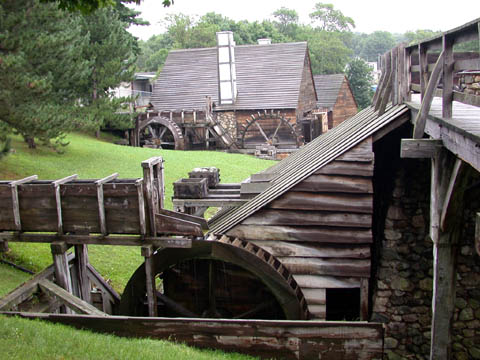
Before going to Salem, however, we started our day at Saugus Iron Works, a blast furnace, forge, slitting mill and sailing transport rebuilt on the site of the original from the 1640s.
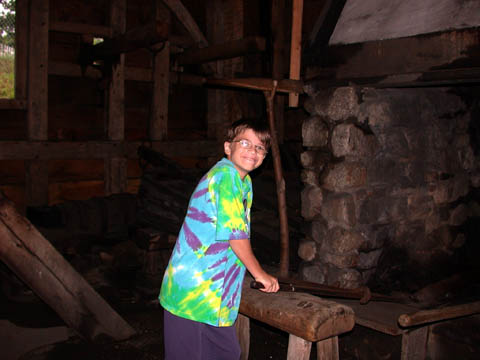
This is where the first cast and wrought iron were produced in North America.
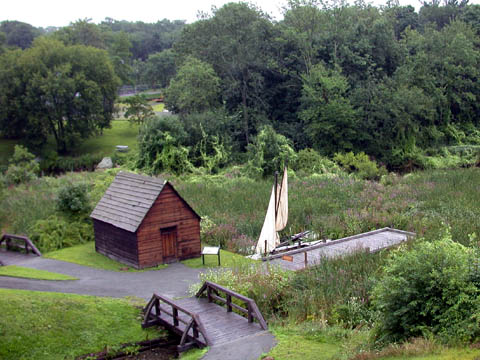
It also happens to be an absolutely beautiful national park site, set on the river chosen to provide power, transport and nearby lumber for the ironworks.
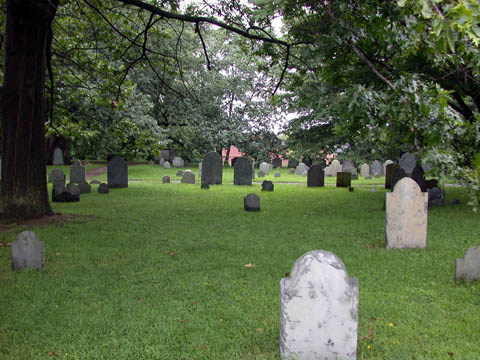
The Old Burying Point Cemetery in Salem, backing up to the Witch Trials Memorial.

Inside the Salem Witch Village, a diorama tour about the origins and beliefs of witches -- as far as whom are concerned, Salem is an astonishing mix of emotional history and extreme kitsch. The two The finest Wiccan store in town, Crow Haven Corner, isn't particularly better stocked than The Walnut Tree back home and is considerably less impressive than The Psychic Eye in Los Angeles. The Salem Witch Museum, while earnest in its attempt to educate about the history, practices, hysteria and modern manifestations of witchcraft, is rather sensationalistic. (We didn't go to the wax museum but the pairing of the witch trials and "the exploits of bold seafarers" did not sound promising.)
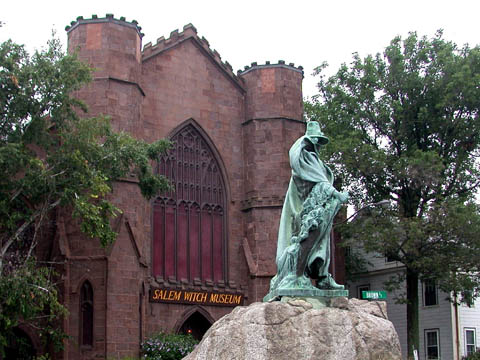
On the other hand, the memorials and more significantly the number of residents and tourists walking around wearing pentacles and talking about Wicca at lunch and in maritime museums made me feel good; in general I'd only met avowed Wiccans before in metaphysical stores or online. Here, in front of the Salem Witch Museum, a statue of Roger Conant, reputedly the first settler of Salem in 1626.
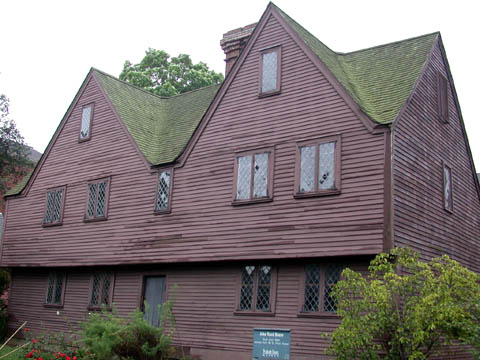
There are many very old houses here, such as the John Ward House from 1684.
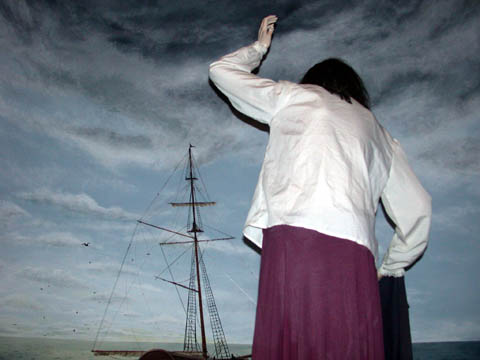
The New England Pirate Museum is set up much like the witch recreations but somehow (especially after Pirates of the Caribbean, both the ride and the movie) it seems much more appropriate to see colorful dioramas of pirates. While there are a handful of artifacts from ships that sank locally, most of the fun of this tour is hearing the tour guide describe the exploits and captures of local pirates and to walk through the replica ship and "pirate cave" with fake bats and skeletons. The kids enjoyed it a lot. This is a model of Rachel Wall, the last woman hanged in Massachusetts; though she admitted to piracy, she denied having killed the man for whose murder she was executed.
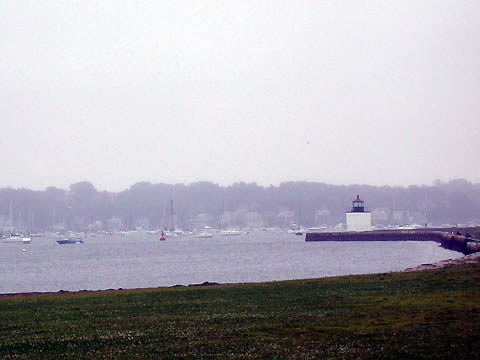
The light at the end of Derby Wharf. During the early 1700s, local merchants traded local fish, lumber and manufactured goods all over the world, bringing in so many imports that its captains met people in Asian ports who believed that Salem was an independent country. During the American Revolution and the War of 1812, many of the merchant vessels became privateers and helped make the US a naval power. At present however there is only one tall ship, the Friendship, permanently docking in Salem, and it had sailed to Cape Cod for a few days. We did see the Fame, a reproduction of an 1812 privateer in which Hawthorne's family owned shares.
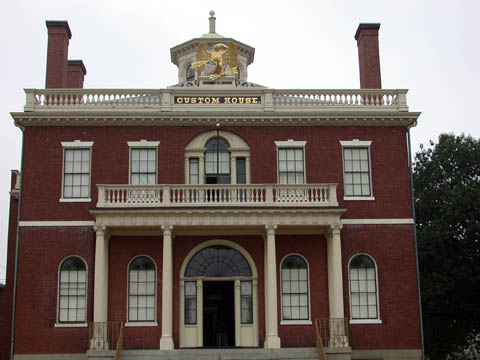
The front of the Custom House. At one time, I learned today, 90 percent of US revenue came from taxes on imports. Hawthorne worked here and based parts of The Scarlet Letter on his experiences as a customs inspector.

CLICK FOR NEW ENGLAND PAGE 9 / RETURN TO MY PHOTOS / RETURN TO THE LITTLE REVIEW
